Estimating Sod Replacement Costs: A Detailed Guide
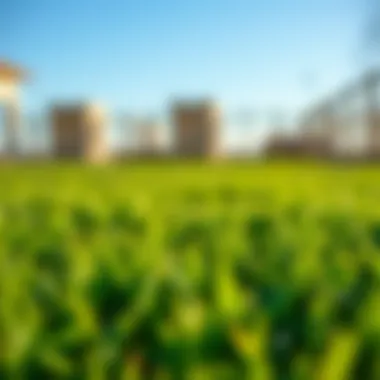
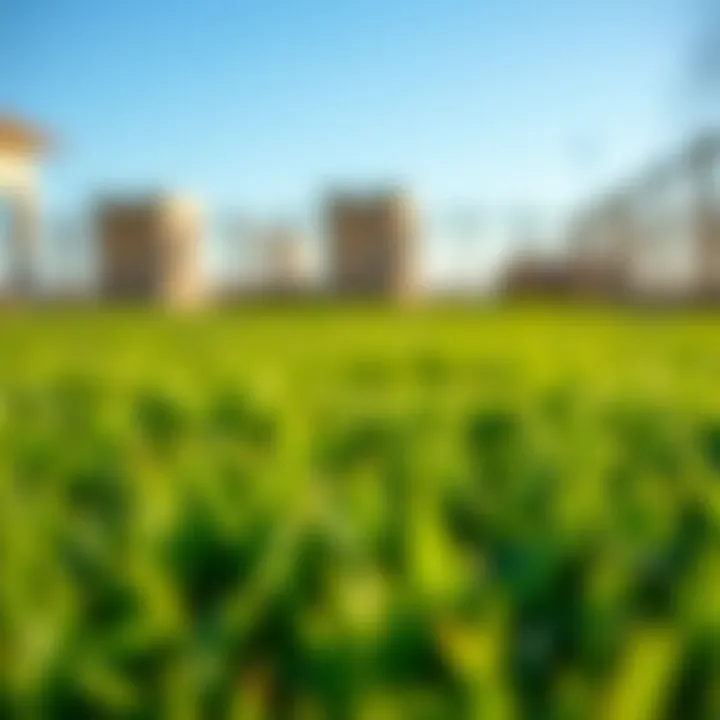
Intro
Replacing sod is an essential task for maintaining the health and aesthetics of your landscapes. Homeowners and landscape enthusiasts alike often find themselves navigating the maze of options and costs involved in this process. At first glance, it may seem straightforward, but a deeper understanding reveals the various factors that influence the price of sod replacement.
Taking into account the region, type of sod, and whether you plan on doing it yourself or hiring a professional can significantly sway your budget. This guide arms you with the know-how to approach sod replacement with confidence, ensuring you don’t burn a hole in your pocket while achieving a lush green lawn that’s the envy of the neighborhood.
Each aspect of sod replacement, from the materials you choose to the technique of installation, comes with its own set of expenses. Moreover, knowing the common pitfalls and best practices can save you time, money, and a fair bit of frustration. In the following sections, we will unpack the critical terms, current trends in sod replacement, and practical applications that will offer you a clearer picture of the costs involved.
Preface to Sod Replacement Costs
Replacing sod isn't just about laying down new grass; it involves a careful consideration of many factors that influence cost. Understanding these costs is essential for anyone looking to enhance their yard or garden. When you start digging into sod replacement, you often find yourself navigating a landscape filled with variables – from the type of sod you choose to the condition of the existing soil. Each of these factors will impact your overall budget, sometimes in unexpected ways.
Understanding sod replacement
Sod replacement involves several steps, starting with assessing your current lawn and the reasons for the change. Perhaps your existing lawn has been ravaged by pests or diseases, or maybe you're simply looking to upgrade to a more resilient variety. Whatever the motivation might be, the process necessitates a systematic approach. Choosing the right sod is crucial; not all grasses are created equal. You need to think about the local climate, sunlight availability, and even how much foot traffic your lawn receives. For instance, Kentucky bluegrass thrives in cooler Northern climates, while Bermuda grass favors warmer conditions.
Selecting the right type is just the tip of the iceberg. Once you've settled on a variety, you need to consider how to prepare the soil for its new inhabitant. This might involve testing the soil for pH levels or amending it with nutrients to create an optimal growing environment. Such tasks, while somewhat labor-intensive, ensure your investment yields the best results in both aesthetics and lawn durability. It’s not just about putting sod down; it’s about creating a thriving ecosystem for your new investment.
Importance of assessing costs
Now, let's talk about costs. The price of replacing sod can vary widely. Without a clear understanding of the expenses involved, you might find yourself in a financial tight spot. Whether you plan to tackle this as a DIY project or hire a professional, estimating costs upfront can save you from unexpected financial strain later.
Key Considerations for Cost Assessment:
- Sod Type: Different varieties come with varying price tags. Specialty grasses, for instance, might cost significantly more than standard options.
- Labor Costs: Deciding whether to go the DIY route or hire professionals will greatly affect your budget. Labor rates can differ based on geographical location and market demand.
- Soil Preparation: Ignoring soil condition in your estimate is a rookie mistake; amendments and tests could add to your total.
Understanding the costs involved in sod replacement prepares you to make financially sound decisions, ultimately impacting the success of your landscaping project.
By taking the time to assess the various factors that contribute to sod replacement costs, you set the stage for a successful lawn upgrade. Whether lush and verdant or hardy and resilient, the right sod can transform a lackluster yard into a showpiece. Identifying your goals and budget early on streamlines the entire process, ensuring that you achieve the desired results without breaking the bank.
Factors Influencing the Cost of Replacing Sod
When it comes to replacing sod, the price tag can sway drastically based on a multitude of factors. Understanding these elements is essential for anyone looking to rejuvenate their lawns or gardens. This section will delve into various influences on sod replacement costs, shedding light on what contributes to the overall financial outlay. Being armed with this knowledge can help homeowners and landscapers alike to strategize effectively and budget accurately.
Sod type variations
Common sod types
Common sod types, such as Kentucky bluegrass, Bermuda grass, and fescue, are the bread and butter of many residential lawns. These types are popular primarily because they are readily available and adaptable to a variety of soil and weather conditions. The key characteristic of common sod types lies in their broad appeal; they're resilient and generally come at a lower price compared to specialty varieties.
For homeowners, the advantages of common sod types often outweigh disadvantages, particularly regarding initial installation costs. Their ability to thrive with proper maintenance makes them appealing choices to consider, especially when budgeting for sod replacement.
Specialty sod types
On the other hand, we have specialty sod types like Zoysia, turf-type tall fescue, or shade-tolerant varieties that cater to specific conditions or aesthetic preferences. These types often command a higher price due to their niche characteristics that support unique lawn needs, such as better drought resistance or enhanced visual appeal.
The unique feature of specialty sod is its tailored performance under certain conditions. These grasses may yield lush, verdant results but come with a steeper initial investment. Weighing the benefits, like their durability and specific growth patterns, against the costs is crucial for making prudent decisions in sod replacement.
Soil condition
Soil testing
Soil testing is one of those essential yet often overlooked steps that can deeply influence the cost of sod replacement. By determining nutrient levels and pH balance, soil testing provides the groundwork for implementing appropriate sod choices and amendments. The key characteristic of soil testing is that it reveals a lawn's unique needs instead of making decisions without data.
Investing in a soil test can save money in the long run. Getting it right from the start means less guesswork and fewer costs related to amendments or poor growth outcomes down the line.
Soil amendments
Once the soil condition is assessed through testing, soil amendments often become a necessity. These alterations might include adding compost, lime, or fertilizers to enhance nutrient content or adjust pH levels. The significance of soil amendments lies in their ability to support the establishment and growth of new sod.
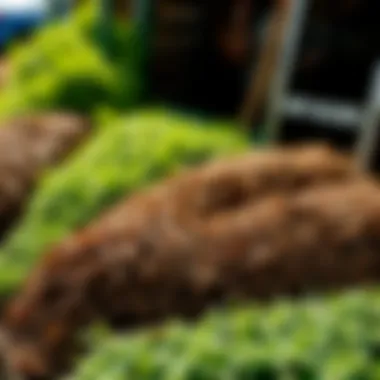
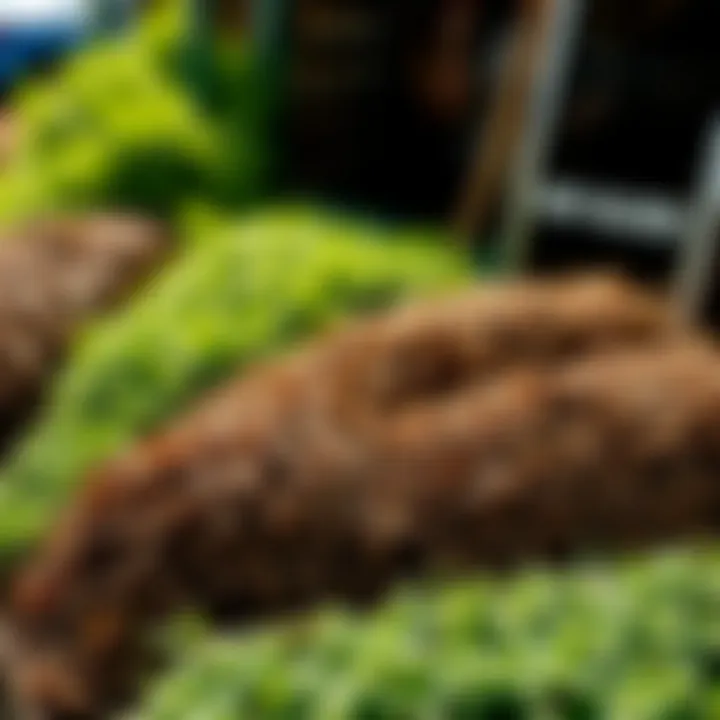
Though the inclusion of amendments can add to the upfront costs of sod replacement, the long-term rewards—such as lush growth and healthier lawns—far outweigh these initial expenses. Investing in soil amendments is an effective strategy for achieving vibrant grass that thrives over time.
Geographical considerations
Regional pricing variations
Geographical differences play a considerable role when estimating costs for replacing sod. Prices can vary widely based on material availability and regional demand. Areas with abundant sod farms may offer lower prices due to accessibility, while remote locations might see higher costs driven by transportation and reduced supply.
Considering regional pricing variations is beneficial as it encourages homeowners to look for local resources. This not only reduces costs but can facilitate a smoother installation process since local suppliers often have firsthand knowledge about conditions that affect sod performance in specific areas.
Climate impacts
Another significant aspect related to geographical considerations is the impact of climate on sod’s success and pricing. Different climates support different types of grass, meaning that a grass variety that flourishes in one location might struggle in another.
A key characteristic of climate impacts is its influence on growth conditions; sod varieties adapted to local climate conditions are likely to flourish without excessive care. Consequently, selecting sod that aligns with the local climate can help save on water usage, fertilization, and long-term maintenance costs, providing a solid return on investment.
Labor costs
DIY vs. hiring professionals
The choice between doing it oneself or hiring professionals can heavily influence labor costs. For DIY enthusiasts, taking on sod replacement can be an appealing way to save money. However, this approach might require significant time investment, physical effort, and the learning curve associated with proper installation techniques.
On the flip side, hiring professionals offers the advantage of experience and efficiency, which can mitigate the chance of costly mistakes. Assessing the merits of both approaches, homeowners can gauge which aligns best with their budget and capabilities, helping to pinpoint the right financial commitment.
Contractor rates
Contractor rates for sod installation can vary significantly, influenced by expertise, project size, and geographical location. Generally, more experienced contractors may charge premium rates, but this can often translate to higher quality work and results. A key characteristic of contractor rates is their variability; understanding market rates in your area can provide clarity when budgeting for your project.
Ultimately, weighing the costs against potential benefits—such as speed and expertise—will be essential in making informed decisions regarding labor costs in sod replacement.
Cost Breakdown of sod replacement
In any undertaking, particularly in landscape projects such as sod replacement, knowing the cost breakdown can significantly influence your planning and budgeting. A clear understanding of these costs helps to anticipate financial requirements, minimizing unpleasant surprises that can sprout up like weeds in spring. From materials to labor, each factor plays a part in determining the overall financial picture.
Material expenses
Sod pricing per square foot
When it comes to budgeting for sod replacement, sod pricing per square foot stands out as a major cost driver. The price of sod varies widely depending on the type chosen. Popular varieties like Kentucky Bluegrass or Bermuda grass might cost around $0.30 to $0.60 per square foot, while specialty options could creep up to $1.50 per square foot or more. The choice of sod impacts not only the immediate outlay but also the long-term health and aesthetics of the yard.
Sod pricing is crucial because it directly correlates to the quality of turf you'll enjoy in the following years. Selecting a sod that's resilient to your local climate can save money in the long run, reducing the need for frequent replacements or heavy maintenance. It's also wise to consider whether to buy sod from a local supplier or a big-box store, as this could influence both your costs and the quality you end up with.
Transportation costs
Next up is transportation costs, another element that can sneak up on you. If you're purchasing sod from a distant supplier, the delivery fees could add a hefty penny to your overall budget. Local sod farms may offer better pricing on delivery, so be sure to do your homework.
The unique feature about transportation costs is their variability. They can depend on distance, type of transport vehicle, and time of the year. Costs may also differ if you opt to handle transportation yourself, involving truck rental fees or mileage costs. Weighing the pros and cons of handling transport allows homeowners to decide whether to save a few bucks or ensure professional handling for potentially better quality sod upon arrival.
Labor expenses
Estimating labor hours
Moving onto estimating labor hours, this is the phase where the project can expand way beyond initial estimates, particularly if you opt for a DIY installation versus hiring professionals. Experienced landscapers can complete sod installation with speed and efficiency, reducing labor costs over time. DIY may promise savings, but it can also lead to costly mistakes if you hit a learning curve.
By creating a realistic timeline and being aware of how long sod installation realistically takes—usually anywhere from 1 to 2 days for average yards—you can understand the labor hours required. Knowing this helps plan the costs involved and can help in scheduling other projects in your garden that may depend on the sod installation.
Costing labor types
When delving into costing labor types, you’ll encounter a range of choices. You can either bring in professionals or enlist the help of laborers or even friends. Pricing depends largely on local market rates for labor, which can swing from as little as $25 per hour to over $100 per hour for specialized contractors.
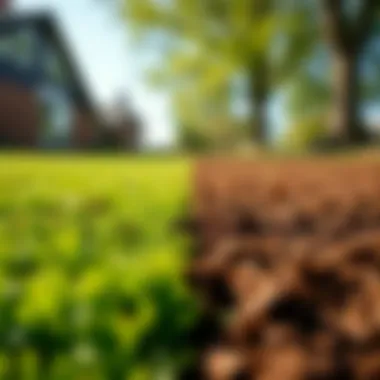
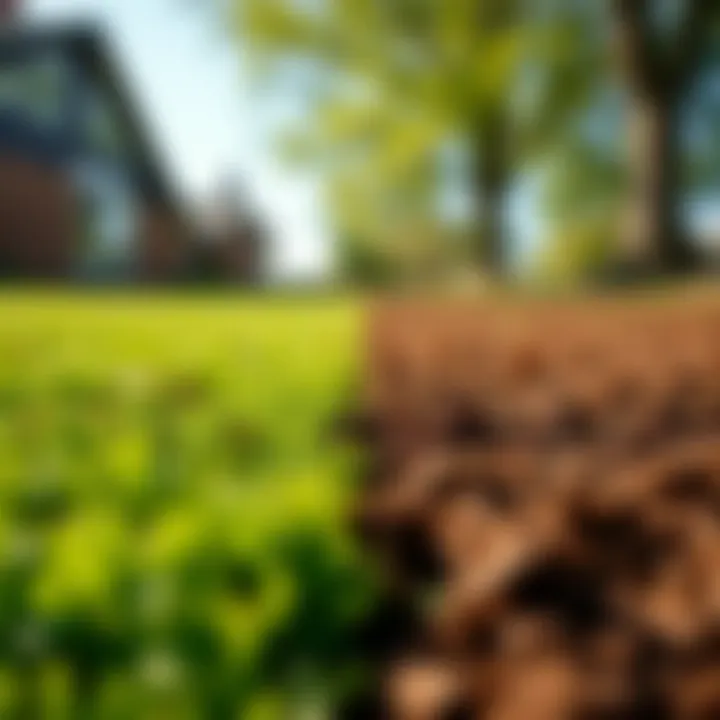
What's interesting here is comparing costs can be misleading. Lower rates might not always mean better value if the available labor lacks the expertise needed for a flawless installation. Weighing the costs against skills ensures that hiring decisions yield the best results and save headaches in the end.
Additional costs to consider
Equipment rental fees
No sod replacement article would be complete without discussing equipment rental fees. If you choose to go the DIY route, renting equipment like a sod cutter or roller can add to your overall expenses. Rental fees often range from $50 to $200 per day, depending on the equipment type.
What’s crucial to remember is that the right tools can drastically simplify your project, ensuring a professional finish. On the flip side, misjudging equipment needs can lead to delays, and hence, unforeseen costs. That’s why thorough planning for what you need can save both time and money.
Disposal of old sod
Lastly, let’s touch upon disposal of old sod. Removing and getting rid of existing sod isn’t just about tossing it on the fire pit. Depending on local regulations, certain disposal methods may carry costs. You might need a dumpster rental or tipping fees at a landfill, which can be an unexpected hit to your wallet.
The upside? Recycling old sod can be eco-friendly and save you costs. You could use it for fill or even create a compost area. Understanding your disposal options can turn what seems a nuisance into a handy resource.
“Budgeting for sod replacement isn’t just about the grass; it’s about the future of your landscape.”
Understanding these costs offers a roadmap to tackle your sod replacement project, ensuring no stone is left unturned as you lay down a beautiful green landscape. With the right planning, you can walk smoothly through the sod replacement process without getting caught off guard.
DIY vs. Professional Installation
When it comes to sod replacement, deciding between doing it yourself or hiring a professional can be a nail-biter. Each option has its repercussions that aren’t immediately apparent. With the right knowledge, this decision can lead to better outcomes whether you roll up your sleeves or make a few phone calls. A proper assessment of what’s needed can pave the way for achieving your landscaping goals effectively.
Pros and cons of DIY
Taking the DIY route can feel like walking a tightrope; there are thrilling benefits, alongside some daunting challenges. Here’s a closer look at both sides:
Pros
- Cost Savings: The foremost advantage is the potential for significant savings. By handling the project yourself, you eliminate labor costs which can be quite steep depending on your location.
- Personal Satisfaction: There’s nothing quite like the feeling of seeing your hard work pay off. Installing sod yourself can fill you with pride, especially when friends and family admire your newfound lawn.
- Direct Control: When it’s your own hands doing the work, you have a say in every detail. From selecting the sod to laying it just right, your vision is executed as you see fit.
Cons
- Time-Consuming: Let’s face it; sod installation isn’t a quick weekend project. If you’re not experienced, you could end up spending countless hours on an endeavor that might take a pro half the time.
- Skill Level Required: Not everyone has the knack for landscaping. A botched installation could lead to uneven growth patterns or issues with drainage, costing you more in the long run.
- Physical Demand: Laying sod involves heavy lifting and prolonged kneeling. If you’re not in good health or lack physical stamina, this could turn into a tough day in the sun.
Advantages of hiring professionals
Using professionals to handle sod replacement can seem like a no-brainer if you consider the benefits that come along with it. Here are some key advantages worth pondering:
- Expertise and Experience: Professionals know their turf—literally. They come equipped with the skills and experience necessary to select the right sod for your specific conditions and carry out the work efficiently.
- Time Efficiency: A seasoned crew can often complete the job in a fraction of the time it would take an inexperienced person. This could mean less disruption to your daily life and an instant transformation of your yard into a stunning green oasis.
- Guaranteed Results: Many landscaping companies stand by their work. This means if something goes wrong in the initial stages after installation, you may benefit from warranties or follow-up services. It takes the guesswork out of the equation.
- Proper Tools and Knowledge: Professionals come equipped with specialized tools and know how to use them. From soil amendments to the correct method of laying sod, their knowledge can save time and effort, leading to a healthier lawn.
It’s essential to weigh the balance between what you can handle for yourself and where you might benefit from professional guidance. Finding the right mix could lead to a lush lawn and a pleasant experience in your landscaping endeavor.
In making a choice between DIY and hiring a professional, keep your strengths and limitations in mind. That way, you can effectively cater to your lawn’s needs and fulfill your vision without overstretching your resources.
Maintaining Your New Sod
Maintaining your new sod is pivotal for ensuring its longevity and vibrancy. After investing time and money into replacing sod, the last thing one wants is to see it wilt or turn brown shortly after installation. Proper maintenance is not only about keeping the aesthetic appeal but also about ensuring the sod establishes a strong root system that can withstand seasonal changes.
A few critical elements contribute to the success of your new sod: immediate care following installation, long-term maintenance routines, and understanding the specific requirements of your sod type.
Immediate care post-installation
As soon as your sod is laid, immediate care becomes essential. The first 14 days are crucial, as the new sod will be establishing itself. Key actions to take include:
- Watering: Right after installation, ensure that the sod is thoroughly watered. It’s best to saturate the soil, so moisture reaches deeper roots. On hot days, you might need to water twice a day to keep the sod from drying out.
- Avoid Foot Traffic: Give your new sod some space. It’s tempting to stroll over to admire the work, but foot traffic can cause stress on the new roots. If you need to walk on it, consider using boards to distribute weight.
- Mowing: Hold off on mowing until the grass has established roots, generally after about two weeks. They should be at least 3 inches high before the first cut.
- Check for Puddles: After watering, keep an eye out for puddles or soggy spots, which could indicate drainage issues. Good drainage is vital for root health.
By focusing on these points, you can set the stage for successful sod establishment.
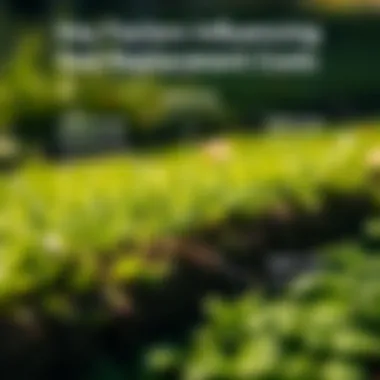
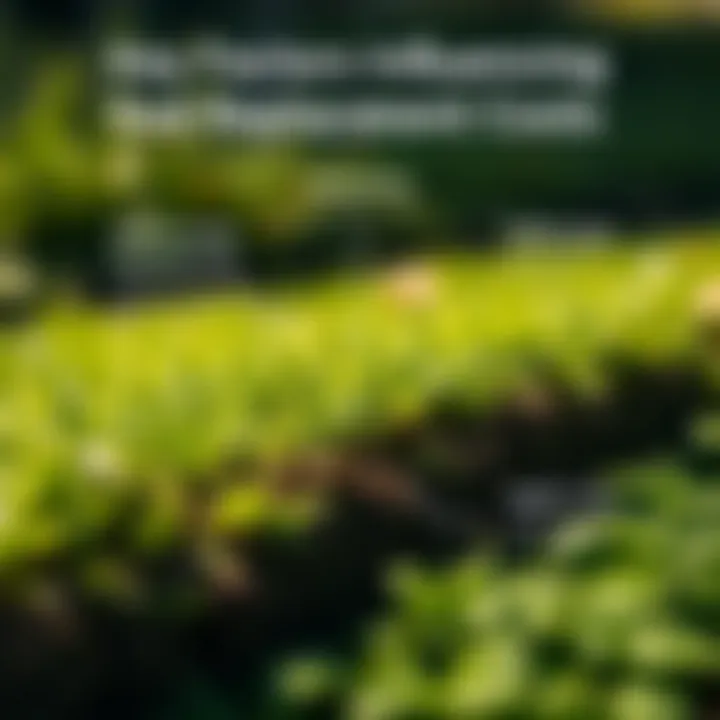
Long-term maintenance routines
Long-term maintenance is what will keep your sod lush and healthy beyond that initial twelve-day period. Two primary aspects to consider are watering practices and fertilization schedules.
Watering practices
Watering is a cornerstone of sod maintenance. Proper watering not only sustains the new grass but also encourages deep root growth, an essential characteristic for a resilient lawn. The key here is to aim for depth instead of frequency. This means:
- Deep Watering: Ideally, your sod should receive about 1 to 1.5 inches of water per week, including rainfall. Watering deeply once or twice a week encourages the roots to go deeper into the soil seeking moisture.
- Timing: Early morning is the best time to water. This timing helps to prevent evaporation and allows the grass to dry off before evening, reducing the risk of fungal diseases.
- Signs of Stress: Be attentive to your sod; wilting, a dull color, or footprints remaining on the grass may indicate it's thirsty.
Adopting these practices not only fosters a healthier lawn but can also make it a popular choice among homeowners looking for lush greenery.
Fertilization schedule
A structured fertilization schedule is equally important in maintaining sod health. Proper fertilization not only supports growth but can enhance color and resilience. Here are critical points about it:
- Timing of Application: Fertilizing shortly after installation can provide necessary nutrients to support establishment. Subsequently, a routine could be done in spring and fall, aligning with the growth cycles of the grass.
- Type of Fertilizer: Opt for a balanced fertilizer that provides nitrogen, phosphorus, and potassium. The right blend will depend on your sod type and soil condition.
- Spread Evenly: Ensure that the fertilizer is spread evenly across the lawn. Uneven application could lead to patches of intense green and others of under-nourished grass.
Regular fertilization can significantly enhance the vitality of your sod and allows for it to flourish in a way that piques interest.
Return on Investment and Value Considerations
When it comes to replacing sod, understanding the return on investment (ROI) isn’t just a matter of crunching numbers. Many overlook the long-term benefits that can stem from a well-maintained lawn. It’s about seeing the bigger picture, where both monetary and aesthetic values combine to provide a solid foundation for making informed decisions in landscaping projects.
Why ROI Matters in Sod Replacement
One could say that sod is like a new suit for your yard. At first glance, it can seem like a hefty expense. Yet, when one considers how it boosts curb appeal, it becomes evident that this investment pays dividends. For agriculture farmers and landscaping enthusiasts, a lush, green lawn can enhance the overall atmosphere and drive potential buyers' interest in properties. As the grass grows, so does its perceived worth.
"A well-tended lawn can easily increase property value and appeal, making it far more than just a simple patch of grass."
Increased property value
Whether you plan to sell your property soon or are hunkering down for the long haul, sod replacement can be key. A beautiful, green lawn stands out on property listings, drawing attention and potentially enticing higher offers. For example, studies have shown that homes with professionally landscaped yards sell for about 10% more on average than those without.
- Enhanced Curb Appeal
A well-maintained lawn can dramatically improve first impressions. Passersby are drawn to vibrant colors and healthy growth, showcasing the care and attention that has gone into maintaining the property. - Higher Market Listings
Homes with new sod often find themselves listed at higher prices. From the moment a buyer drives by, that fresh, green grass speaks volumes about the current state of the home. - Attracting Buyers
It can be a game changer when listings compete against similar homes. A gorgeous, well-kept lawn could capture the buyer's attention and create a sense of desirability that aligns with a higher price tag.
Aesthetic advantages
Beyond monetary gains, one must ponder the aesthetic advantages sod brings to a property. This immediately affects personal enjoyment and how neighbors and visitors perceive your space.
- Visual Appeal
A fresh sod installation transforms tired, worn-out patches into a vibrant canvas of green. This freshness can create inviting spaces for family gatherings or outdoor activities. - Canvas for Creativity
With a solid base established, enthusiasts can experiment with flower beds, pathways, or water features, enhancing the entire look of a property. The options become endless as the healthy lawn provides a stunning backdrop. - Ecosystem Benefits
A thriving sod also supports local wildlife—encouraging biodiversity, and that benefits everyone indirectly. It can improve the local environment, allowing for wildlife habitats and enhancing property aesthetics.
In the sphere of sod replacement, ROI isn’t just about dollars; it's about the overall value you add to your life and your surroundings. The right sod choice, along with proper maintenance, not only enhances financial worth but enriches daily experiences, combining the beauty of nature with the practicality of investment.
Ending on Sod Replacement Costs
When it comes to sod replacement, understanding the associated costs is essential, not just for your wallet but also for the long-term wellbeing of your landscape. As gardening enthusiasts and agricultural practitioners know, establishing a healthy lawn isn't merely about the initial outlay; it's about making a judicious investment.
Assessing the costs accurately helps in setting realistic expectations for your sod replacement project. The financial implications extend far beyond the price of sod itself. Just like a car comes with maintenance fees and insurance, sod entails ongoing upkeep and potential amendments based on your area's conditions. From soil testing to choosing the right sod type for your climate, each decision carries a weight of significance.
The key points that stand out in evaluating sod replacement costs include:
- Sod Type: Prices vary significantly depending on what kind of grass you choose. Whether opting for Kentucky bluegrass or Bermuda, know the implications on both cost and maintenance.
- Soil Condition: One can't ignore the soil's health; soil tests and amendments add to the initial expenditure but can prove beneficial in the long run.
- Labor Decisions: The choice between DIY efforts or hiring professionals reflects directly on the budget. You can save dough by going the DIY route but consider your skill level and tools.
- Additional Costs: Always factor in unexpected expenses like the disposal of old sod or equipment rental fees. When project costs start piling up, even a minor aspect can cause a budgetary surprise.
Remember, spending a little more upfront for high-quality sod and proper installation may save you headaches down the road.
By keeping these factors in mind, you're setting the stage for a successful sod replacement, leading to benefits such as increased property value and enhanced aesthetics of your lawn. The connection that people form with their outdoor spaces makes the financial commitment valuable.
Summarizing key points
To wrap it up, costs stemming from sod replacement can be nuanced. Here's a rundown of the essentials:
- Understand the types of sod and their respective costs.
- Evaluate the condition of your soil and address any issues proactively.
- Consider whether you will perform the installation yourself or hire pros for the job.
- Anticipate additional costs that can spring up.
Planning accordingly with an awareness of these elements will keep you a step ahead, giving you a lawn that is not just grassy, but genuinely vibrant and sustainable.
Final thoughts
In the end, sod replacement is not just a one-time task; it's a commitment to nurturing an environment that offers palpable joy. Yes, it does involve careful financial planning and outreach for the right resources, but when done correctly, the benefits resonate far beyond the initial expenditure.
Taking time to understand the types of sod available, assessing your soil accurately, and weighing labor options can truly help in achieving a living backdrop that reflects your personal touch and environmental awareness. In a world where every inch of green matters, making informed decisions in sod replacement paves the way for lush landscapes that bring peace and satisfaction into one’s life.







